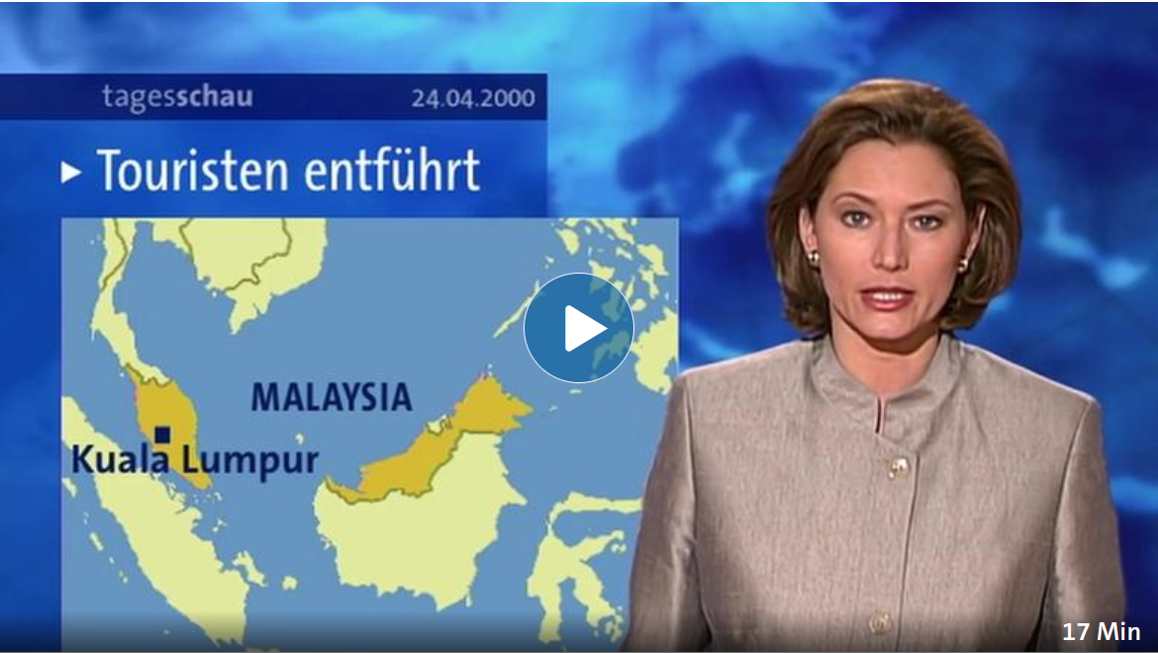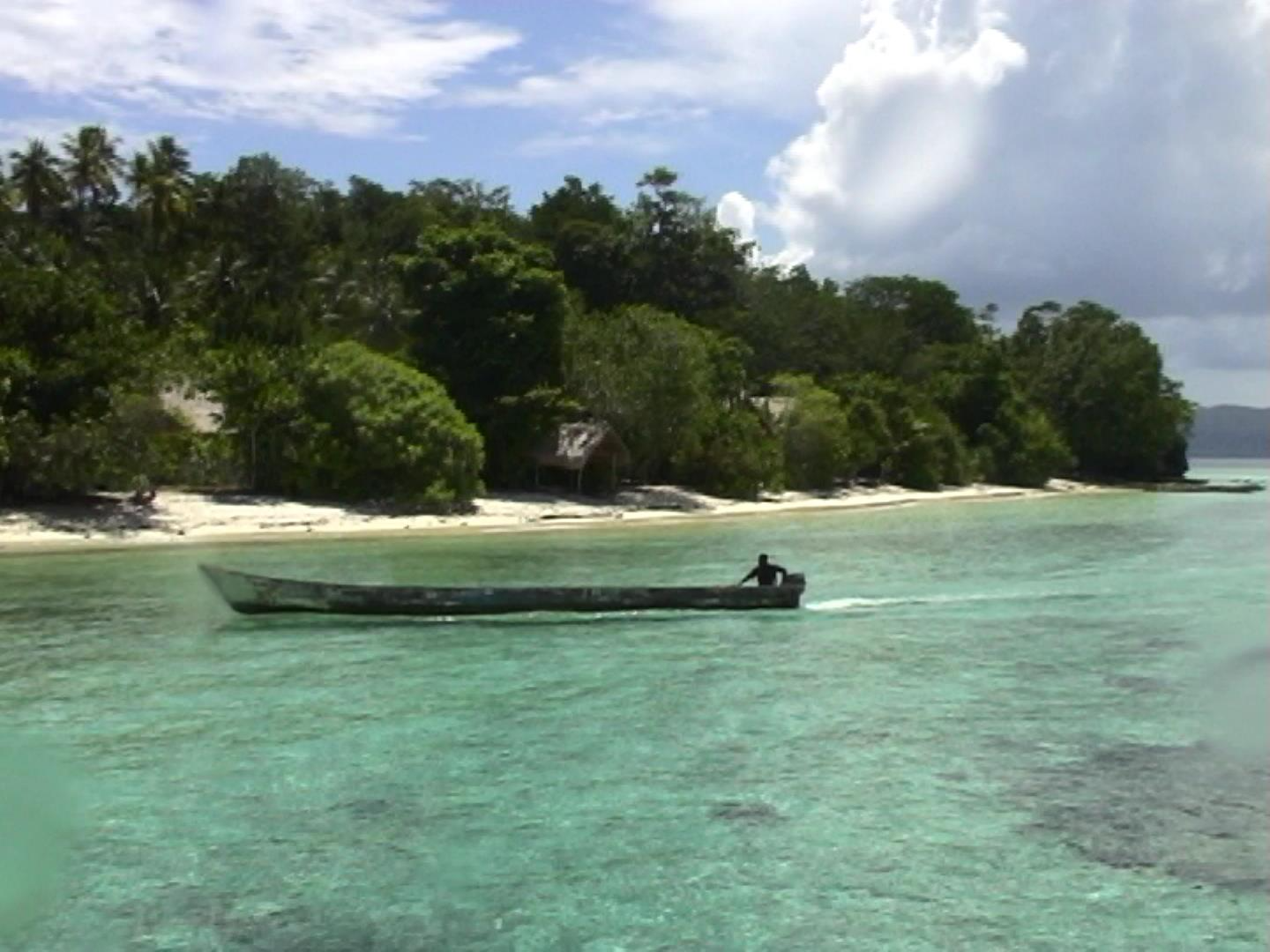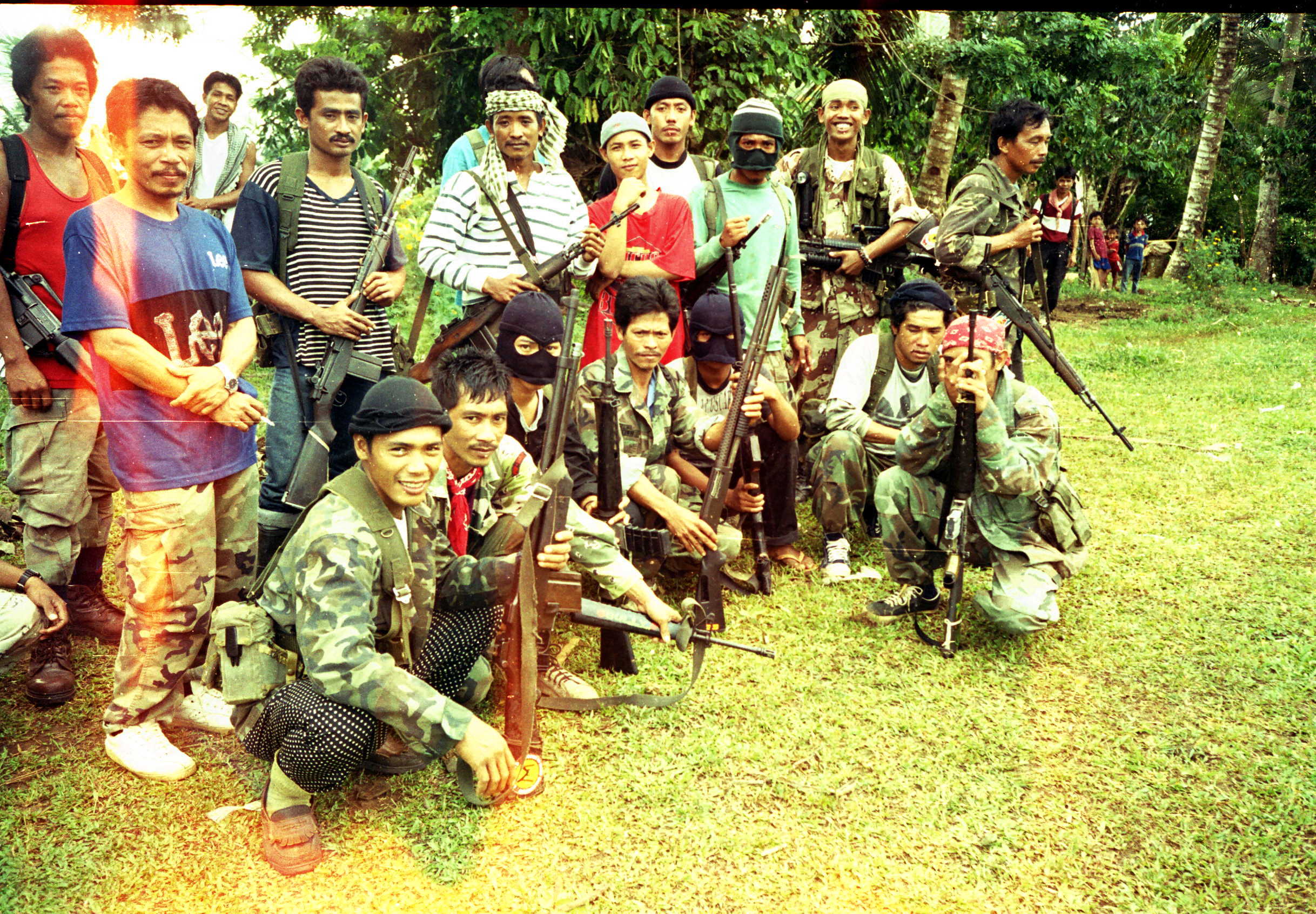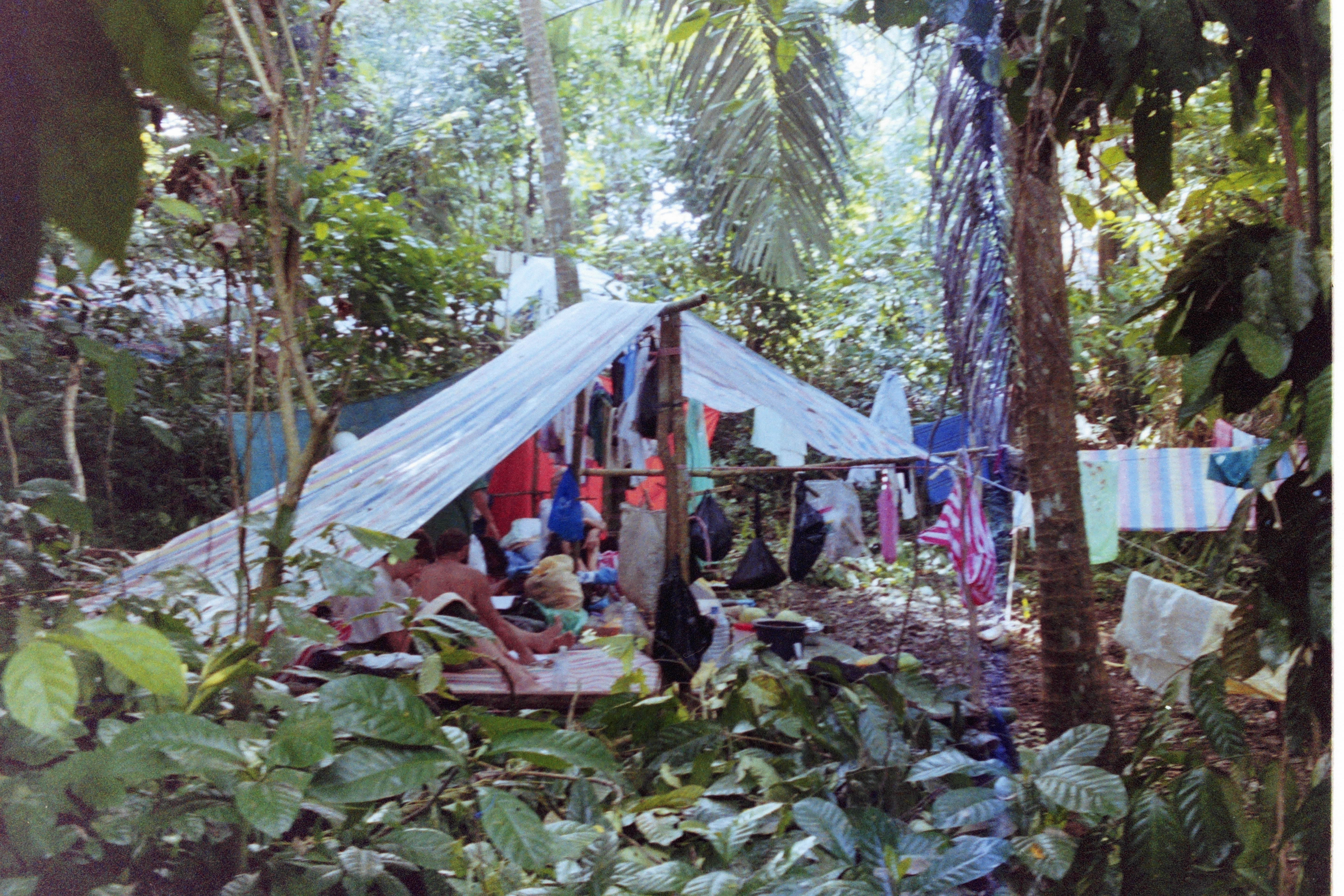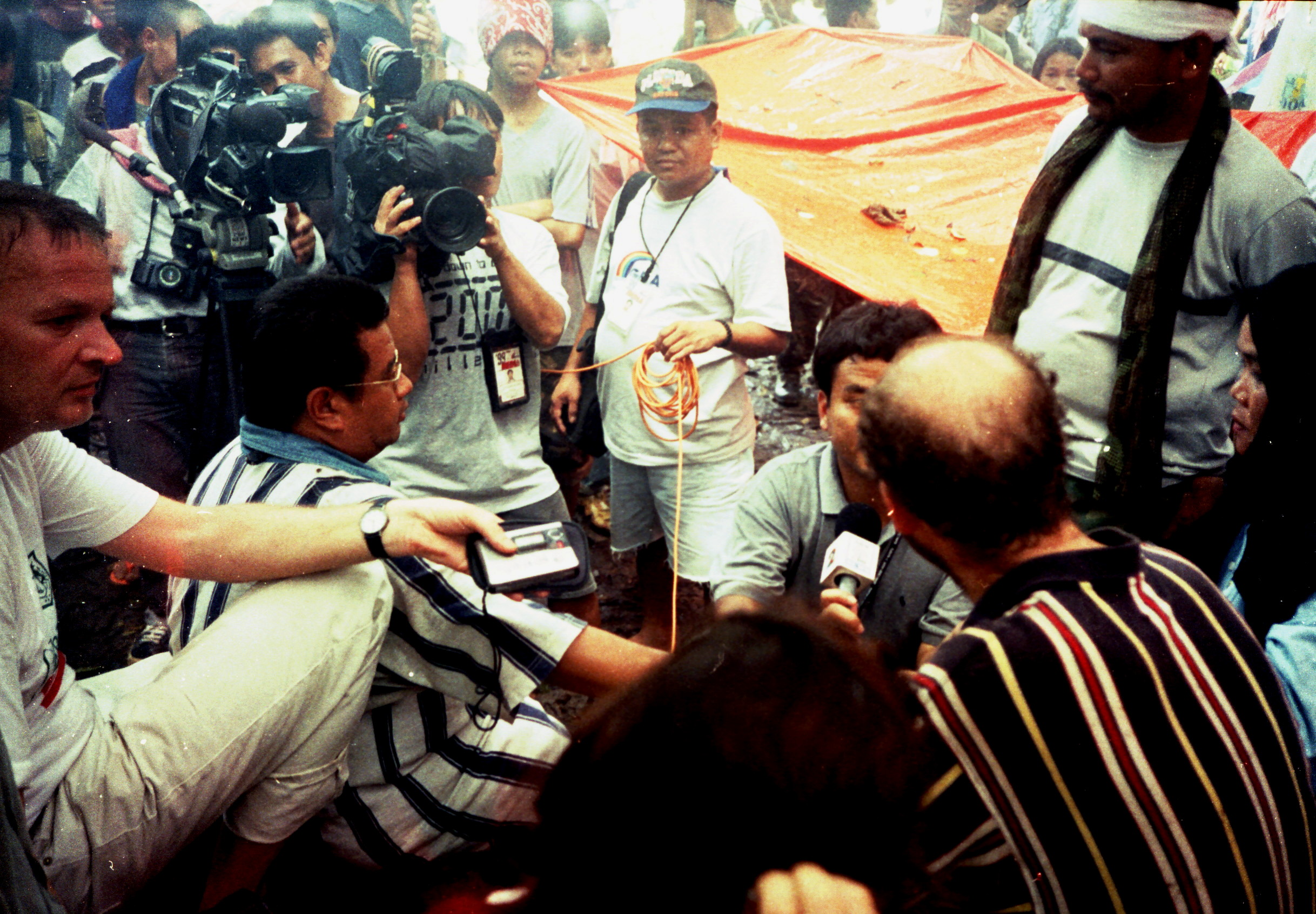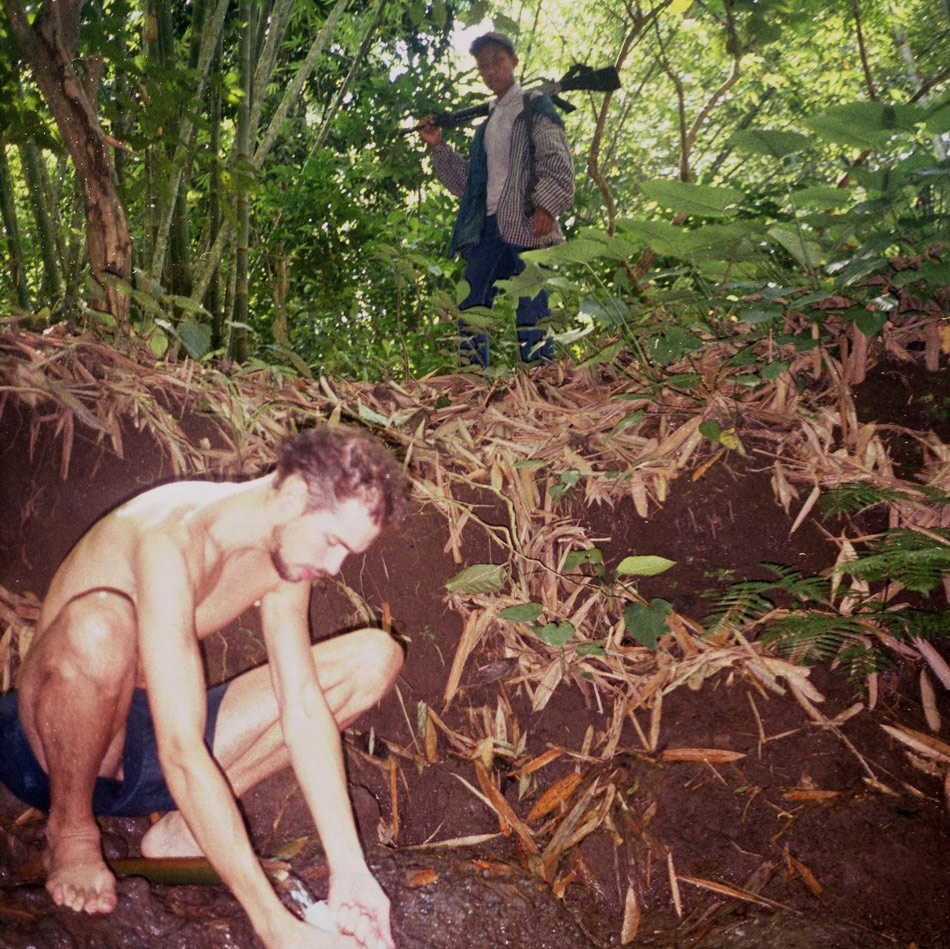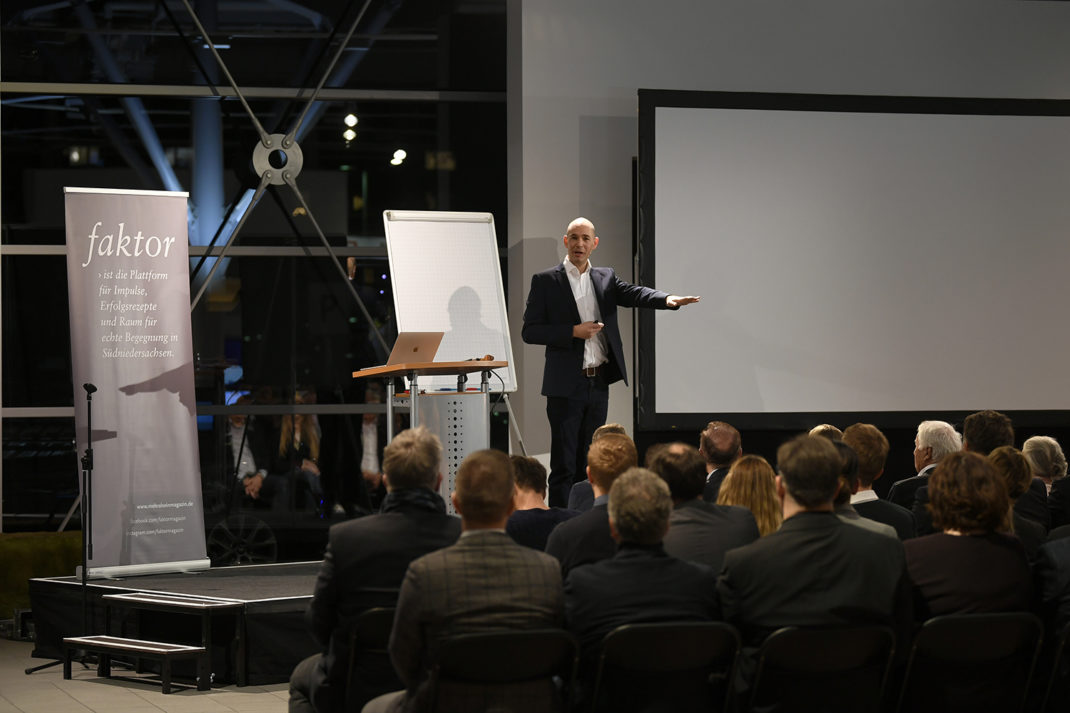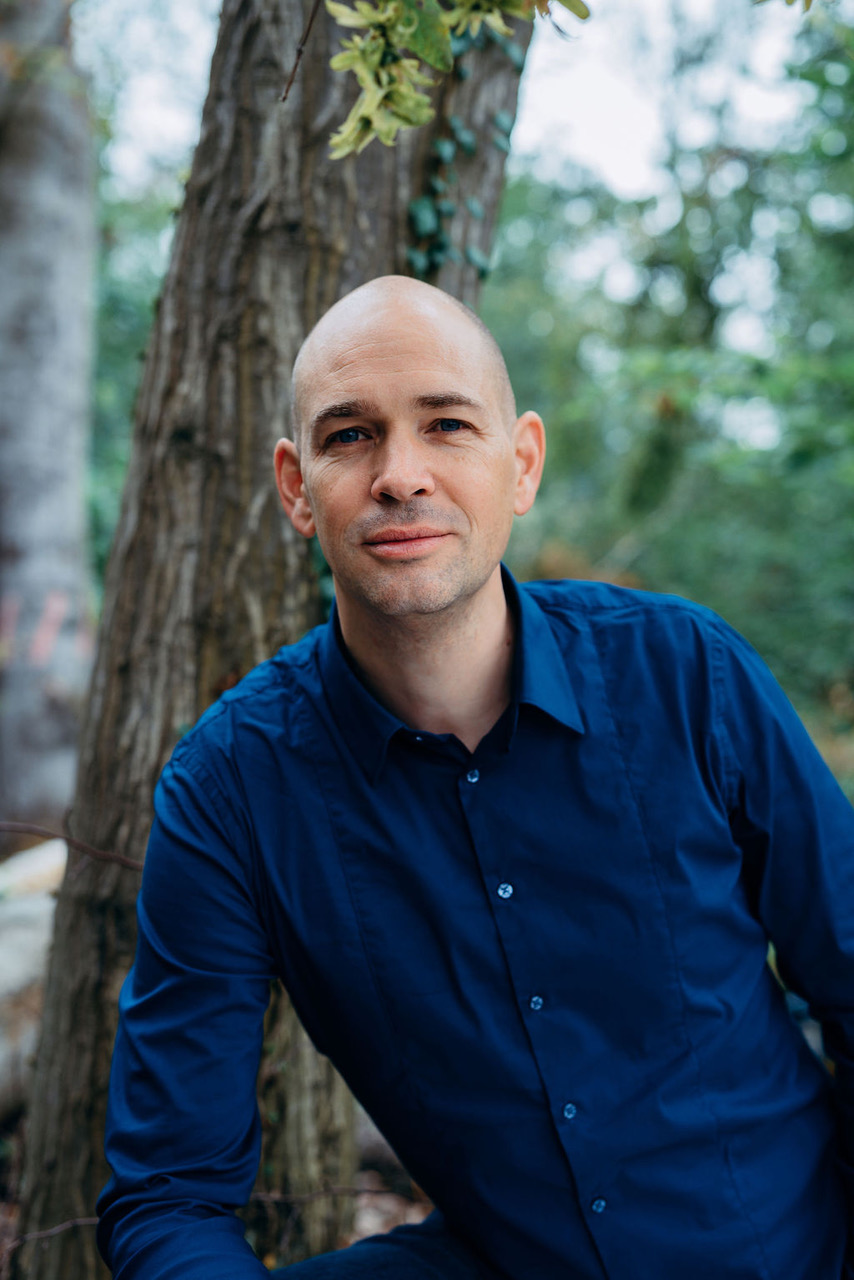Kidnapping
Wallert
Kidnapping
Wallert
The Wallert Kidnapping Case
In 2000, Marc Wallert was kidnapped in the Philippines, along with his parents Renate Wallert and Werner Wallert. The Wallert family and 18 other people were abducted during a diving holiday on the Malaysian island of Sipadan by the terrorist group Abu Sayyaf and taken to the Philippine island of Jolo. In Germany, millions followed the "kidnapping of the Wallert family" in the media, with particular focus on the health condition of Renate Wallert. In his SPIEGEL bestseller "Strength Through Crises," Marc Wallert describes how he and the other hostages managed to survive the kidnapping in the Philippine jungle. His "jungle strategies" largely correspond to the protective factors for resilience, which are now well-documented scientifically. These include acceptance, optimism, self-efficacy, and other strategies to gain inner strength known as resilience.
Today, Marc Wallert does not see himself as a "kidnapping victim," but rather as a "kidnapping survivor." He has overcome his abduction well and learned a lot from his time as a hostage. In his book and speeches, the author and Keynote Speaker transfers his insights from the jungle to his readers and audience.
In addition to his book, this article provides fascinating background information on Marc Wallert's kidnapping and his life after captivity.
The Kidnapping of the Wallert Family – Abducted in the Philippines
On Easter Sunday 2000, April 23rd, around 8 PM local time, a kidnapping story began on the other side of the world, unparalleled in the view of German media experts. An Islamist terrorist group kidnapped 21 people from the Malaysian diving island Sipadan off the east coast of Borneo to the Philippine island of Jolo. The hostages were ripped from a vacation paradise and transported into a jungle hell.
Ten of the hostages were diving vacationers, some of whom had only arrived on the island on the day of the kidnapping. The others were employees of the diving resort and the turtle station next door. One of the hostages was 26-year-old Marc Wallert. As he worked as a management consultant at PricewaterhouseCoopers (PwC) in Luxembourg, he hadn't seen his parents, Renate and Werner Wallert from Göttingen, for a long time. Thus, a plan for a joint diving holiday was formed. For ten days, everything went completely normal and beautiful. They visited various diving spots around the island, enjoyed the many turtles and huge barracuda swarms. And in the evenings, they relaxed on the sun deck, enjoying a drink at sunset, followed by the breathtaking tropical starry sky. The same was true on Easter Sunday.
Suddenly, the lives of the vacationers dramatically changed within seconds. Eighteen heavily armed terrorists raided the diving resort and forced the victims into two boats, approximately ten-meter long, narrow "Longboats" with an outboard motor, as used by local fishermen. An American couple who were out on a night dive and another couple who steadfastly refused to get into the boats escaped the kidnappers.
Asian Longboat, as used by the Abu Sayyaf kidnappers
The Kidnapping Begins
Both boats were dangerously overcrowded with 21 hostages, 18 kidnappers, and a large number of diesel canisters. Marc and Renate Wallert were together on one Longboat, Werner Wallert on another. The boats were deep in the water, just ten centimeters from the edge of the gunwale. Had the sea not been completely smooth that night, the boats would never have reached their destination.
Stunned by shock, the hostages huddled on the boats, crammed together, silent with horror. The kidnappers were initially visibly nervous. They feared being discovered by patrol boats of the Malaysian or Philippine navy. The 20-hour journey from Malaysian Sipadan to the Philippine island of Jolo was grueling. There was hardly any food or water on board. As daylight broke, the tropical sun mercilessly scorched from the sky. In the maze of many small islands, the kidnappers eventually lost their way and had to ask fishermen for directions to reach the island of Jolo, part of the Sulu Archipelago in the southern Philippines.
From here, the kidnappers had set off days earlier for their commando operation. They belonged to the Muslim terrorist group Abu Sayyaf, already feared for their terrorist attacks and kidnappings. They kidnapped wealthy Philippine locals to finance themselves and carried out attacks on Christian churches and schools. However, they had never left Philippine territory for a terrorist action before. Thus, there was no travel warning for the Malaysian diving island of Sipadan.
The Abu Sayyaf (Abu Sajaf) Kidnappers
The causes of the recurring conflict between the Catholic-dominated central government in Manila and the Muslims in the south of the country - and ultimately for this kidnapping - go far back in the country's history. In the 13th century, Islam arrived in the region with Arab traders. In the 16th century, Spain conquered the country. The Philippines, named after a Spanish king, became the only Catholic country in Asia - except for the south. Even during American rule starting in the early 20th century, complete subjugation of the rebellious Muslims in the south was not achieved. In the second half of the 20th century, a civil war raged for two decades in the Sulu Archipelago. In 1996, an agreement with the government in Manila granted Muslims autonomous status within the Philippine state. This ultimately led to the formation of the Abu Sayyaf Group, whose political goal was always complete independence and the establishment of an Islamic state in the Sulu Archipelago. They saw the autonomy agreement as a betrayal of the Muslim cause. However, the Abu Sayyaf Group is not a political organization; it evolved into a radical and violent Islamist terrorist group. Their idols are the Taliban in Afghanistan and Osama Bin Laden, killed by the Americans.
The leader of the kidnapping operation was Galib Andang, known as "Commander Robot". During the crossing to the island of Jolo, he interrogated the hostages about their names, nationalities, and professions. Originally, they had hoped to capture American citizens to exert pressure for the release of Ramzi Ahmed Yousef, one of the responsible for the 1993 World Trade Center bombing, from American custody. Ironically, it was four American citizens who remained back on Sipadan.
Galib Andang made it clear to the hostages that they were merely "instruments" in their fight for full independence. He sought a lot of publicity for his political concerns and the successful completion of the command operation.
Heavily armed rebels of the Abu Sayyaf
The Hostage Situation in the Philippine Jungle of Jolo
After the two boats reached the island of Jolo, the hostages were led on a night march to their first quarters. It was a typical local farmhouse, a bamboo hut on stilts with a corrugated iron roof. The hostages ironically called this first of six different camps "Crowne Plaza." Initially, the owner's family provided the hostages with a little food, but soon they had disappeared.
After eight days, the group of hostages experienced the first attack by the Philippine army, which had surrounded the camp. On the afternoon of May 2, a prolonged battle suddenly broke out near the accommodation between rebels and the army, fought with assault rifles and automatic weapons. The hostages had to flee head over heels with their kidnappers to a small clearing a few kilometers away. There, the Abu Sayyaf rebels and hostages were also bombarded with artillery. Fortunately, the bombardment caused no casualties among the hostages. The rebels were able to break through the army's siege with their hostages and reach the second camp on a night march through difficult terrain.
In the second quarters, called the "Open Air Camp," the hostages had to build their makeshift sleeping places from bamboo supports, banana leaves, and a plastic tarp for rain protection. A Philippine TV team came here and photographed the entire group of hostages. The uncommented footage was published by the news agency Associated Press on Youtube in 2015. The group stayed only five days in this quarter, as they were also tracked down by the army here and involved in a shootout. This was documented by a TV team. The images of the frightened hostages with the shootout as "acoustic backdrop" went around the world.
As a consequence, the kidnappers fled with their hostages on a grueling 30-km day-long forced march to a mountain. This march, mostly in pitch-dark night, pushed even the younger members of the hostage group to their limits. The "Mountain View Chalet" quarters consisted of a small abandoned bamboo hut. Due to the altitude, water supply was a massive problem. Only contaminated water dripped from a rock crevice.
The Harsh Everyday Life During the Kidnapping
The evident supply problems led to a relocation after eight days to a lower-lying quarters: "Sea View Lodge." Here, the hostages lived with a farming family, occupying their living and sleeping area. For some of the hostages, sleeping on a sort of thin mattress was an unusual luxury.
After ten days, they moved to the "Two Rivers Camp." As the name suggests, water supply and personal hygiene were no longer a primary concern here. The accommodations for the western hostages were two open bamboo platforms with plastic tarps as roofs. This location attracted many international journalists, leading the kidnappers to fear that the site would soon be discovered. As a result, after two weeks, they moved their western hostages to a separate quarters, the "Mid Jungle Camp," where they remained until their release, for Marc Wallert, about three months long.
Hostage Camp in the Jungle of Jolo
The living conditions in the six camps were extremely primitive. Sometimes the hostages simply slept on the ground. The plastic tarps over the bamboo platforms did little to keep out the tropical rain showers. Only the farmhouses, with their corrugated iron roofs, offered effective protection from the wet. Naturally, there were no such things as sanitary facilities or electricity. The hostages lived hidden in the middle of nowhere.
Access to water was crucial for basic hygiene, drinking, and cooking. For the first few weeks, the diet consisted almost exclusively of rice, which could only be cooked with water, seasoned with a bit of soy sauce. The situation gradually improved due to deliveries through the local governor. The German embassy utilized these contacts to supply the hostage group in the last two quarters with Bundeswehr combat rations. These included a main dish as well as hard biscuits and portioned canned goods for other meals. In the last months, the provision was also improved by the deliveries of a woman who had permission from the rebels. She brought fresh food and canned goods to the last two camps, which she bought at local markets. The hostages paid for this with cash they had secretly received from their home countries or through their embassies or which they got from journalists who came to the camp.
The Role of Media in the Wallert Kidnapping Case
The media played a crucial role in this hostage drama. They transformed the kidnapping into a unique media event that dominated global headlines for a time. Achieving this was the declared goal of the rebel commanders, especially Commander Robot. They sought to give their Abu Sayyaf Group greater political significance and desired representation in the "Organization of Islamic Conference (now Cooperation)" (OIC), an organization of over 50 predominantly Muslim countries and groups advocating for Muslim interests worldwide. Therefore, as early as the sixth day of the kidnapping, a young woman with a small video camera was smuggled into the first hostage quarters, and her shaky images were globally disseminated by news agencies. Subsequently, professional media representatives in large numbers arrived at four of the six hostage camps. There were TV teams from the Philippines, Malaysia, France, Finland, and Germany, as well as writers, photographers, and radio reporters from various countries. In May alone, there were 16 TV teams.
The intense media contacts had various effects, both positive and negative. As intended, the Abu Sayyaf Group dramatically increased its notoriety. They also profited from the presence of journalists in the hostage camps, demanding and receiving $400 per team for 'protection,' as they claimed. In one case, a larger group of German media representatives refused to pay and were detained until a payment of $25,000 was made.
International journalists interviewing Werner Wallert in the jungle camp
An effect back home was that the abundance of images in the news broadcasts led viewers to experience this real-life hostage situation like a reality show – with the additional thrill that it was, ultimately, a distant reality. Veteran German TV journalist Ulrich Wickert was quoted as saying he had never experienced anything like this in his long career (Brigitte L. Nacos: Mass-Mediated Terrorism, Rowman&Littfield Publishers 2002, p. 78).
In the Philippine jungle, journalists were welcome compatriots who provided the hostages with money and reported on the status of negotiations and reactions back home. Many appeals were recorded on their cameras, mostly advocating for a peaceful negotiation solution, unsurprisingly given their experiences with military confrontations. The hostages felt they were contributing to improving their situation (see resilience strategy of self-efficacy), rare moments given the overall sense of powerlessness. The hostages perceived themselves more as objects of complex negotiations, whose dynamics and backgrounds they couldn't comprehend.
The Challenge of On-Site Reporting of the Kidnapping
The massive influx of TV teams with their cameras was also a burden for the hostages. They called it the 'zoo effect.' The journalists came, took their pictures, and disappeared. The hostages remained. The images and interviews became a sought-after commodity on the international news market. The journalists were accused of unwittingly favoring the kidnappers' cause, who could present their intentions and views in front of the cameras. And the growing publicity drove up the price for the hostages' release. Some journalists seemed to have qualms about this. They pointed out to the hostages that their work prevented them from being forgotten in the remote tropical jungle.
In reality, embassies, diplomats, crisis teams, and government agencies were working behind the scenes for a resolution to the case. They preferred to work without publicity, under conditions of a news blackout. However, in this case, they had to watch the journalists' interviews and reports in their 'situation rooms' to gain new insights.
Western governments relied entirely on the state structures of the Philippines to achieve a peaceful resolution to the kidnapping. They applied considerable diplomatic pressure, which was met with little understanding in Manila. There, the authorities would have preferred to deal swiftly with the Islamist kidnappers, accepting casualties among the hostages as collateral damage, as had happened in other extortion cases.
In this case, however, a special envoy of the president had to negotiate with a criminal rebel leader to clear political objectives out of the way and haggle over the price for the hostages' release. The peaceful end of the Sipadan hostage crisis was ultimately achieved through the financial commitment of Libya's then-leadership. A high-ranking representative of the Kohl administration convinced Libyan leader Gaddafi that Libya could dramatically improve its international reputation by paying for the hostages' release. According to media reports, $25 million was paid. Additionally, the personal commitment of the former Libyan ambassador in Manila, who knew some of the actors on the rebel side from earlier times, played a significant role.
Marc Wallert's Jungle Strategies: Resilience Protective Factors
During his captivity in the Philippine jungle, Marc Wallert intuitively used mental techniques known today as protective factors of resilience. With these, he strengthened his inner resilience. Thanks to these survival strategies, Marc Wallert emerged unscathed from his time as a hostage in the jungle. He now refers to them as his "jungle strategies." His key resilience protective factors were acceptance, optimism, stress competence, self-efficacy, social support, and mental and physical fitness. Humor, including gallows humor, also played an important role repeatedly.
For example, one resilience technique to strengthen optimism is envisioning positive future scenarios. What helps today in everyday life also helped him during captivity: Marc Wallert repeatedly imagined how his life would look as a free man, how he would return to Germany after his release, reunite with his brother Dirk, and toast to freedom – with a cold beer! This vision gave Marc Wallert courage as a hostage. And it would eventually become reality, albeit slightly different from his original dream…
Marc Wallert during daily water fetching – strictly guarded by an armed kidnapper
Marc Wallert's Release from Captivity
Marc Wallert spent four and a half months as a hostage in the Philippine jungle. He was kidnapped in Malaysia on April 23, 2000, celebrated his 27th birthday on July 8 in the rebel island of Jolo, and was released under dramatic circumstances on September 9. Marc Wallert was the last Western hostage to be released, along with two Finns and a Frenchman. According to media reports, the 21 hostages were released mainly due to ransom payments – one after the other. Renate Wallert was the second hostage to be released on July 17, 2000, followed by Werner Wallert on August 27.
Here is an excerpt "End with Terror" from Marc Wallert's bestseller "Strength Through Crises"::
"On the morning of September 9, 2000, I had no idea of my impending release. We suddenly heard intense combat fire in the jungle. Again, we had to flee, not knowing where to or from what. By now, we were only four Western hostages: Seppo, Risto, Stéphane, and I. The others had already been released, except for our Filipino fate companion Abi, who was held elsewhere.
After several kilometers of walking, Commander Robot ordered us to climb into a small bamboo house on stilts, in the middle of a field. There we sat, waiting – extremely tense, while the combat fire drew closer. Eventually, several military jeeps and transporters arrived. Two representatives of the Philippine negotiators got out and began an excited discussion with Commander Robot. Apparently, they had the ransom for us with them. Their convoy had been ambushed by a rival faction of Abu Sayyaf on the way there. They feared losing their share of the ransom and therefore tried to thwart our release. The attack had left dead and injured among the representatives' bodyguards. In front of our eyes, a nerve-wracking haggling over us hostages took place – with unmistakable gestures. The representatives pointed at us and made a hand sign with four fingers. Commander Robot raised three fingers and pointed at Seppo, Risto, and Stéphane. He only wanted to release three hostages. Specifically, I was to remain as a pawn for their protection against the Philippine military. Maybe even to extort more ransom.
It was cruel to witness how my release became the most important negotiation item in the chaos. My biggest fear was being left behind alone. Having no one to share my fate with, to talk to, to care for.
The combat fire seemed to be approaching. Time was pressing. Suddenly, the sweating representatives shook hands with Commander Robot. He agreed. My heart almost stopped. Then came the liberating news: all four hostages would be released.
We were told to quickly get onto the back of a transporter. Crowded together, we sat between heavily armed rebels and bodyguards of the representatives. The convoy that had been shot at on the way had become a transport for the dead and injured. The transporter was open on the sides and offered no protection. Through the open rear, I could see further transporters, heavily loaded with rebels, their weapons at the ready. Together with the rebels, we bumped along jungle tracks for what felt like an eternity until we stopped on a paved road. The rebels jumped off our vehicle, and soldiers of the Philippine army got on. That was a good sign. Still, I tried to restrain my euphoria. Just don't lose your head.
We drove a few kilometers along the road and stopped at a field. Military helicopters were already waiting for us there. With them, we took off towards freedom. The doors of the combat helicopters were removed, manned with soldiers and machine guns.
Overwhelmed by an indescribable mix of emotions, I looked into the eyes of my three companions. They, too, vacillated between crying and laughing. Then a last doubt struck me: What if we were now hit by a ground-to-air missile? But after the longest flight of my life, we finally landed at a secure location. I saw the first solid houses in a long time and a crowd of people waiting for us. I could hardly believe my luck. After months of uncertainty, it was finally true: I was a free man again."
Marc Wallert's Life After the Kidnapping
Following his release, Marc Wallert initially flew to Libya to thank Gaddafi for his role in securing a peaceful release. To his great surprise and joy, his brother Dirk Wallert came to Tripoli to pick him up. Here, Marc Wallert's vision became a reality: Dirk and Marc Wallert toasted to freedom with a beer! At Hannover Airport, there was an emotional reunion with their parents, Werner and Renate Wallert.
After their release, the Wallert family faced intense media interest, giving numerous interviews and press conferences. This was partly to show gratitude to the many people who had been anxiously following their story on television. One could hardly escape the media coverage of the "Kidnapping of the Wallert Family" in 2000, even if one wanted to. The "Tagesschau" at 8 pm alone reported about the Wallert kidnapping case for approximately two hours. Consequently, the Wallert family increasingly yearned for privacy.
Marc Wallert as a Motivational Speaker at a Keynote Event
After a few weeks in their hometown of Göttingen, Marc Wallert returned to Luxembourg, where he worked as a management consultant. He quickly resumed his career and worked for over 15 years as a consultant and manager in international companies. He was always successful but often stressed. Ultimately, it was the "deadlines" - which weren't actually deadly - that drove Marc Wallert into burnout. From his burnout and personal relationship crises, he learned a lot about crises: namely, how to not only get through crises with strengthbut also become stronger from them.Inspired by these experiences, Marc Wallert decided to write a book. Not a story of his kidnapping, but a source of inspiration for people looking for ways to handle crises and develop mental strength. It's about dealing well (and humorously) with crises. Yes, Marc Wallert has developed a penchant for crises, or at least for the opportunities that lie within them. "Resilience" is his heartfelt theme, which he now shares in his speeches as a keynote speaker.
What is the Wallert Family Doing Today?
The Wallert family became well-known in 2000 due to the intense media coverage of their kidnapping. In particular, the question "How is Renate Wallert doing?" moved many people following the images from 2000.
After her release, Renate Wallert largely recovered both psychologically and physically and is now quite healthy for her age, as is her husband, Werner Wallert. Both are enjoying their retirement. They are now proud grandparents of five grandchildren from their two sons, Dirk and Marc Wallert.
Since 2009, Marc Wallert has also been living in his hometown of Göttingen. From there, he travels as a Keynote Speaker to his clients to give talks. Nowadays, Marc Wallert primarily delivers online keynotes from his professional digital studio. This not only benefits his clients but also his family.
Thus, even after the COVID-19 crisis, Marc Wallert remains true to his motto:
"Gain Strength Through Crises." Because every crisis also contains an opportunity!

